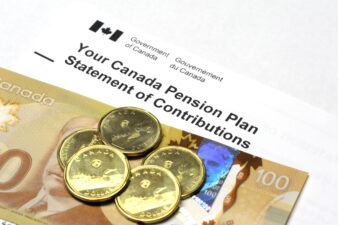Canada ranks ninth in the 2019 Global Pension System Ranking by Country with an index score of 69. The Old Age Security (OAS) and Canada Pension Plan (CPP) are the important foundations of the country’s retirement system. Would-be retirees look forward to receiving the pensions, because both are guaranteed lifetime incomes.
However, you would be throwing caution to the wind if you retire with only your OAS and CPP but with zero savings. Soon-to-be retirees must realize early on that the two publicly administered pension plans are partial replacements of the average worker’s lifetime earnings. There’s a wide income gap a retiree must strive to fill before taking the retirement exit.
The reality
Even the Canada Pension Plan Investment Board (CPPIB), fund manager of the CPP pension, says it’s a mistake to assume the OAS and CPP can cover all your retirement expenses. Many retirement experts cite the need to have at least 70% of your working income to live comfortably. Others float a magic number like $1 million in your nest egg.
Assuming you’re 65 and claim the pensions today, the combined monthly payment is $1,304.50. The maximum OAS monthly payment (January to March 2021) is $615.37, while the average monthly amount for new CPP beneficiaries is $689.17 (as of October 2020). For the CPP, the maximum payment amount for this year is $1,203.75, although only a few make enough contributions to claim the full amount.
Remedies to increase the payouts
Prospective retirees have remedies to increase the monthly payouts. Seniors with excellent health and no urgent financial need can delay taking the pensions at 70, not the standard age of 65.
If you elect to claim the OAS five years after 65, the benefit will increase permanently by 36%. Thus, you can receive $837.39 per month instead of $615.37. For the CPP, the incentive for deferring payments is a 42% permanent increase. The monthly payment will jump to $978.62.
Now that you have an idea of the monthly pension ($1,816.01) for delaying the pensions, assess your retirement expenses. Make sure the budget is realistic, and do not underestimate the costs.
Enduring investment income
Investing in Canada’s largest bank is not a mistake. Royal Bank of Canada (TSX:RY)(NYSE:RY) can be your third source of enduring retirement income. Aside from its dividend track record of 15 decades, the bank has increased its yield by 36% over nine years. The current yield is 4%.
According to Deloitte Center for Financial Services, the fallout from COVID-19 is reshaping the banking industry, although the scale of the economic consequences is second only to the 2008 global financial crisis. Among the bold moves of Canadian banks during the pandemic, including RBC, is the exponential increase in loan-loss provisions.
For fiscal 2020 (year ended October 31, 2020), RBC posted revenue growth of 2.6% versus fiscal 2019. However, net income fell 11.14% to $11.43 billion on account of a 134% increase in loan-loss provisions (from $1.8 billion to $4.3 billion). Nonetheless, RBC will continue to provide income streams to investors for decades to come.
Good financial sense
Since life expectancy in Canada is also increasing, it makes sense to delay the OAS and CPP. You shave a few years off your savings needs and mitigate the longevity risk.







